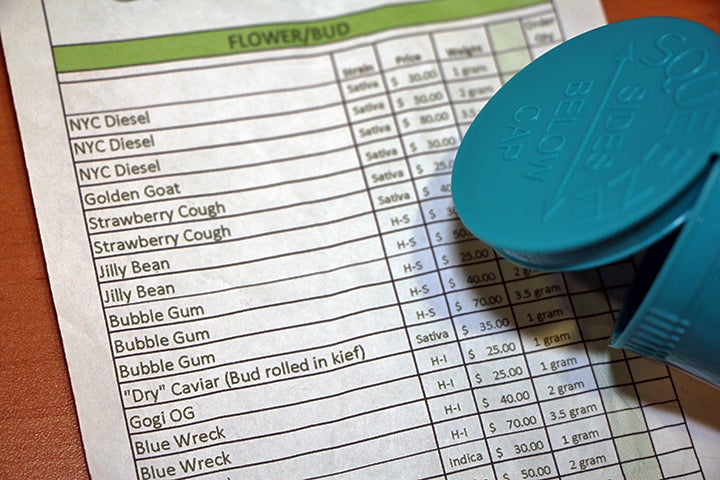
(Photo Credit: Steve Johnson)
I spent a good part of this summer in the Colorado ski town where the late John Denver wrote “Rocky Mountain High,” so that state’s experiment with legal recreational marijuana inevitably caught my attention. Proponents of legalized pot point to racially disparate enforcement of marijuana laws, and I am sympathetic to decriminalization, very different from legal recreational use; even more so to responsibly regulating medical marijuana as a scheduled substance, like many other pharmaceuticals, including opioids. But it appears that the Colorado law has so far been implemented without a well thought-out regulatory regime to accompany the rollout.
That’s bad news, because the federal government is doing nothing to backstop Colorado. While the Food and Drug Administration (FDA) should be looking at “edibles” and marijuana smoking, it is not, since pot remains, as a technical matter, illegal under federal law. The Federal Trade Commission (FTC) is not looking at advertising for the same reason, and the Justice Department has a well-publicized non-enforcement policy on all marijuana products. For this reason, when it comes to pot, the federal government has completely abdicated its role in one of the great past successes of public health law and policy: preventing the marketing of hazardous substances to minors.
Perhaps like me, you are old enough to remember the 1970’s “Joe Camel” marketing campaign by tobacco giant RJ Reynolds. The cartoon “Joe” was dropped by the industry voluntarily, after it appeared that the hip camel was appealing to would-be teenage smokers.
In 2009, the FTC banned marketing of flavored tobacco — even though selling to those under 18 was already illegal. It appears that the federal regulators and Big Tobacco (at least since it was embroiled in the landmark late-90s litigation) clearly understand that marketing tobacco directly to teens is a no-no. At this very moment, there is a debate raging on whether public health authorities should target vaping by young people. As a practical matter, we are getting to zero tolerance for marketing tobacco to young people in this country.
When it comes to tobacco use, the fact that young people cannot make their own purchases legally does not prevent a vigorous regulatory regime protecting them. Why should pot be any different? Recently published studies show that regular marijuana use by teenagers led to cognitive decline, poor attention and memory, and decreased IQ.
In Colorado, adults and children alike are showing up in emergency rooms with psychotic symptoms after overdosing or experiencing adverse reactions to marijuana-infused products.
The problems at the Colorado pot shop are obvious if you just ask a few questions. One of my intrepid colleagues asked those questions this summer, and shared what he learned with me (I stopped short of the door, aware that the sale of marijuana is still, under federal law, a criminal offense). With just a little onsite research, we learned that legal pot poses three big threats:
- It is hard to gauge the proper dose (a problem for kids and parents alike)
- The delayed onset of effects for edibles means that there is a temptation to overdose, and be at the wheel of a car while impaired
- The marketing techniques specifically appeal to young people, even if, as a technical matter, people under 21 can’t buy (did that ever stop you from getting a beer when you were in college?)
Back to the local Rocky Mountain pot shop. He walked in, and my colleague, let’s call him Pete, was handed a “sushi menu” style list of options. The edibles are popular. They include THC-infused “Sour Gummie Bears,” “Red Fish” (that look like Swedish Fish), and “Ganjala Taffy,” as well as chocolate fudge truffles and “Colorado Bars.” Some of the smokables have kid-friendly names too, such as Bubble Gum and Jilly Bean.
In July of this year, the edibles were served up in portions that Pete was told by the “budtender” needed to be divided into three or four pieces; the candy was packaged in a plastic wrapper which was then inserted in an easy to pop open tube in a festive turquoise color — perfect for the Fisher-Price set, who I am quite sure do not know that gummy bears should be cut in quarters. I understand that new “emergency regulations” enacted in Colorado this summer now limit dosage to 10 mg per unit. That would be a big improvement over what we saw, and may warrant a return visit.
Then there is the problem of the timing of onset of effects. There’s a scene in last year’s movie “The Wolf of Wall Street,” where Leonardo DiCaprio’s character Jordan Belfort consumes an old stock of Quaaludes provided by his colleague. Feeling no effect, and thinking the pills are too old to do much damage, he takes a couple more. In the next scene, Jordan totals his Lamborghini and much of his Long Island neighborhood.
At the dispensary, Pete was told that the edibles don’t kick in for about two hours. Let’s say you consume some, and as a recently licensed driver, get in your car. For those who have copped their parents’ Swedish Fish, and are perhaps lacking in impulse control, if one-half doesn’t get you high right away, what about two, three, or four pieces? So far so good, until you become completely wasted an hour into a drive on the winding switchbacks of the Rockies. And what happens to the little one who can’t tell mommy’s special gummy bears from his own?
Marijuana legalization initiatives are on ballots around the country. But Colorado’s experience to date counsels a healthy dose of caution, and a clear regulatory template. Ironically, Colorado is using the revenues from its hefty tax on marijuana sales to plug the gap in its education budget. The question is, will it have a bunch of stoned kids filling the seats in those classrooms?
Meryl Chertoff is the executive director of the Aspen Institute Justice and Society Program.

